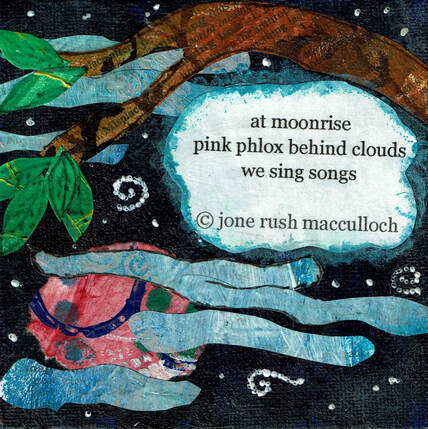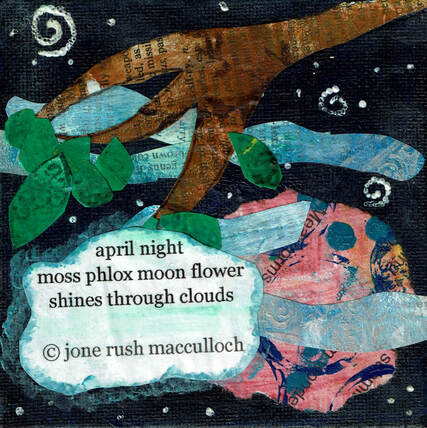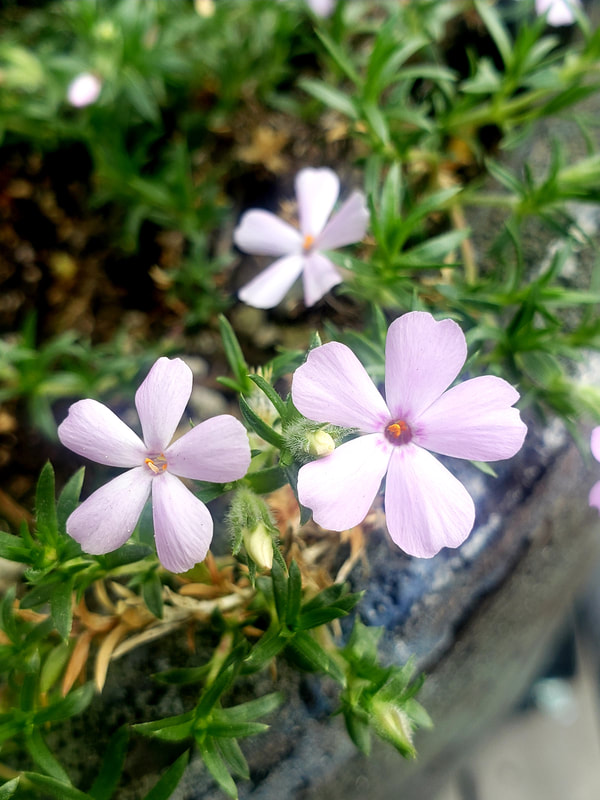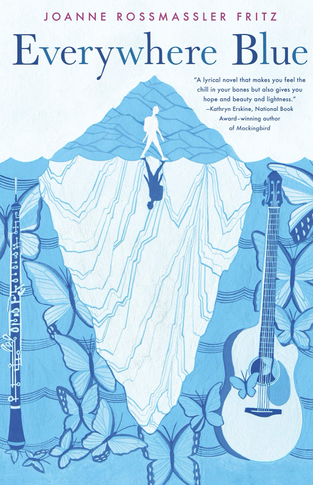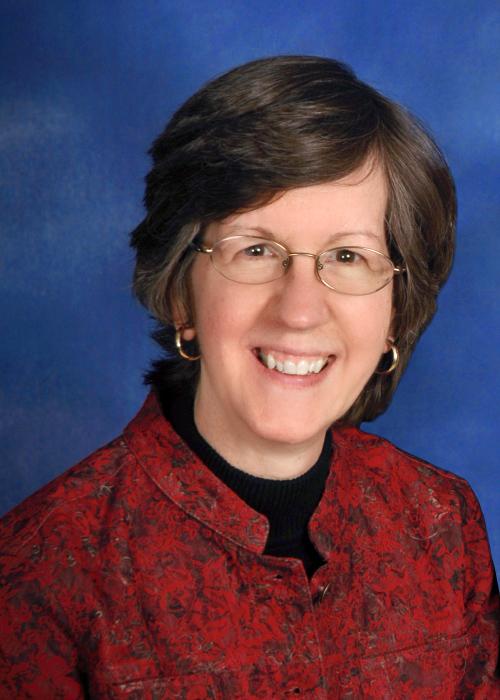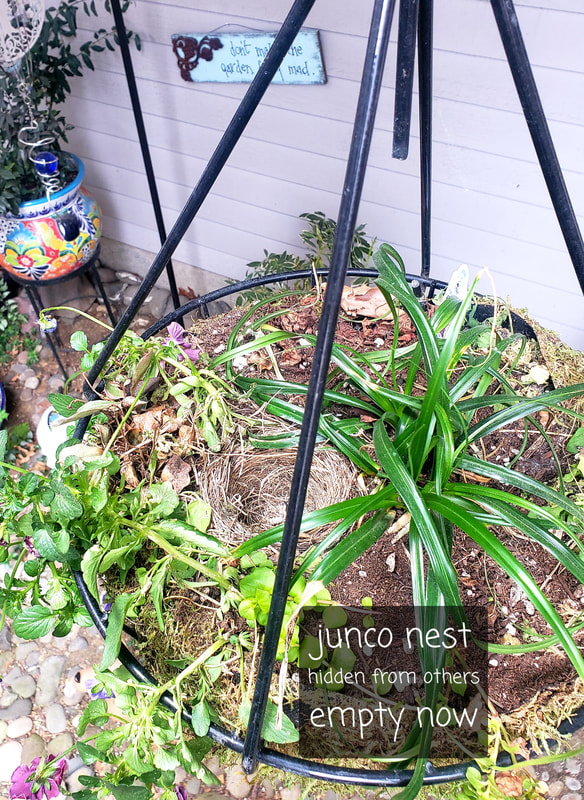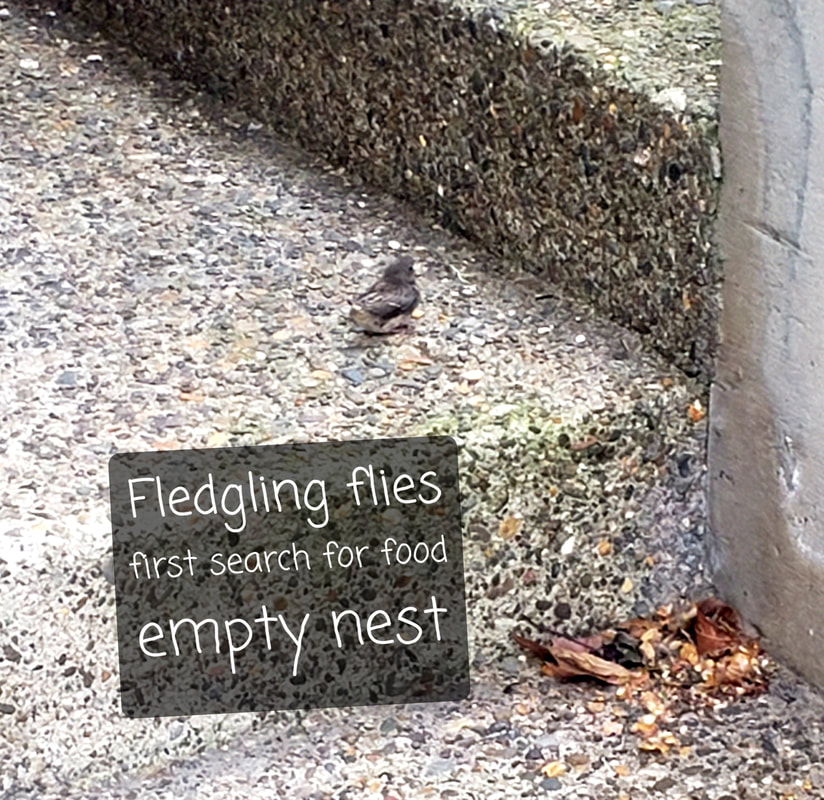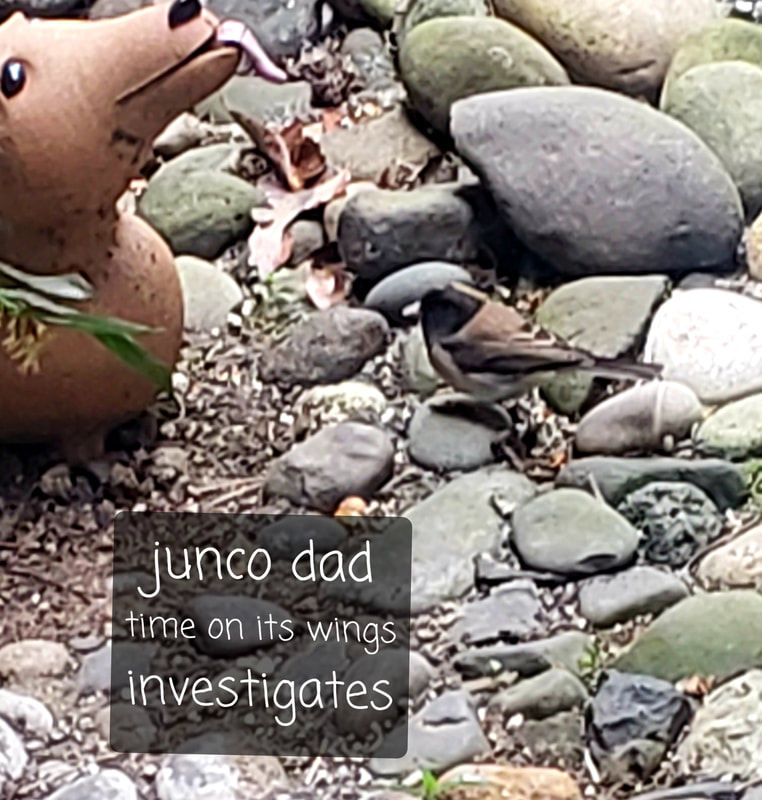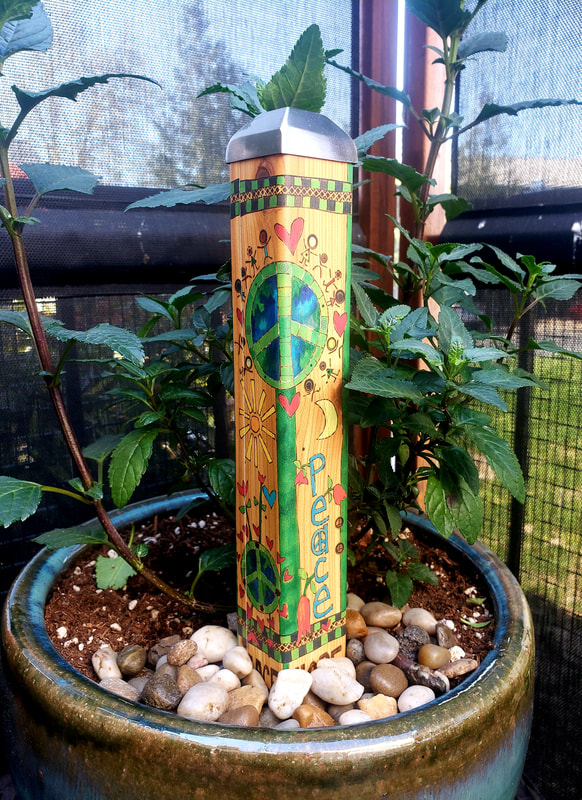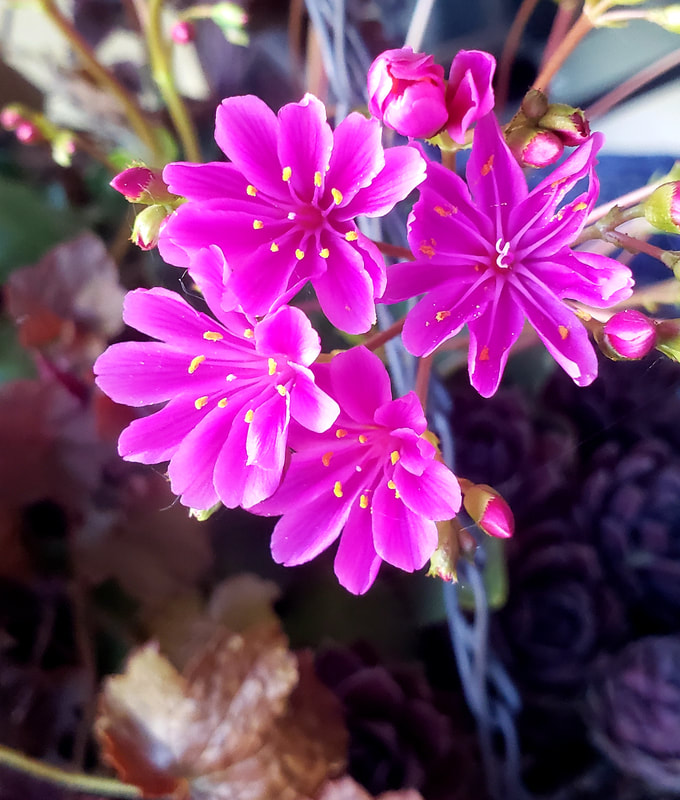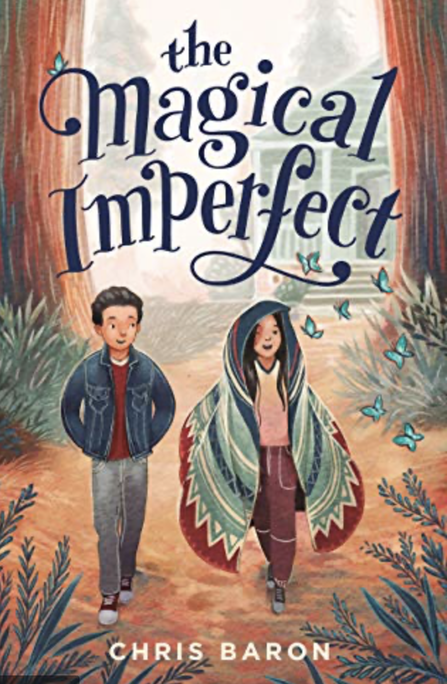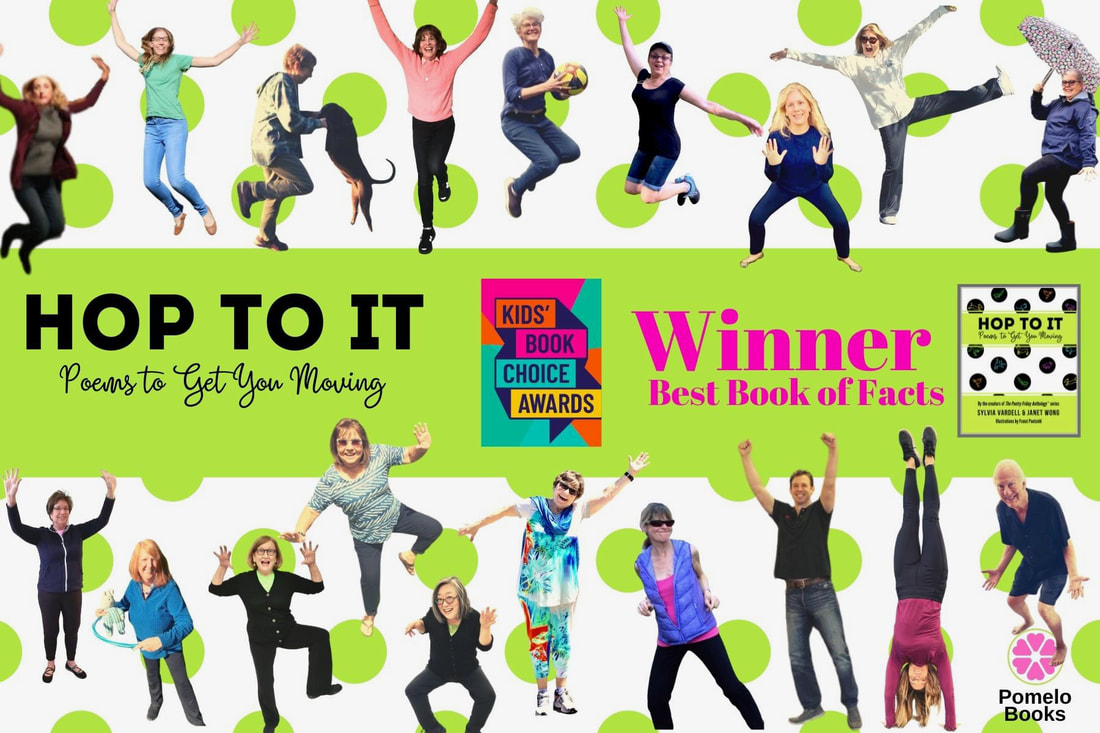|
Well, today is the final day of April. End of National Poetry Month. I have loved every interview this month. Our Poetry Friday host is Matt at Radio, Rhythm & Rhyme and he has winners for books. I will have winners next week so be sure to comment on this or any of my posts for the month by Tuesday, May 4 (May the 4th be with you). I LOVE trees! And I was so excited to get this new book by Lita Judge. But first, not only is it Lita's interview and National Arbor Day, a little bird told me it was our guest's birthday! 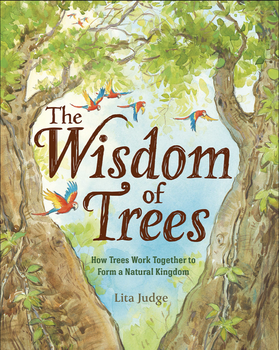 Before you sat under that magnificent thousand year old oak, were there other experiences with trees that helped you form such a bond with them? LJ: I was born on an island off the coast of Alaska under the giant Douglas fir of the Tongass National Forest. So I grew up surrounded with trees. My dad was a soil scientist with the Forest Service and we spent much of my childhood living in some pretty remote areas. So from an early age I’ve had a great appreciation of nature, and especially trees! What led you to decide to write THE WISDOM OF TREES? LJ: I’ve always loved trees, and could identify different species, but I really didn’t know a lot of the recent science about them until I read a research paper talking about how trees communicated, how they fed one another, and even helped each other to fight against attacking insects. I began to realize that the stories trees had to tell were as startling and important as the stories I was creating. I knew I had to learn more about trees and write this book. Besides the research for the tree facts, what other research did you do? LJ: I read a lot of the latest research papers and talked to scientists but the most important thing was I traveled extensively to visit different forests both in America and Europe. In order to create the illustrations, I really needed to see different kinds of tree species than what I can find where I live, in New England. I needed to find ancient trees as well. I traveled to visit a yew tree in Northern Wales (UK) estimated to be nearly 4000 years old, and woodland preserves where the forest haven’t been logged and allowed to become old growth. I’ve been fortunate enough to see the bristlecone pines in Nevada which are some of the oldest trees alive. This all helped me to gain the understanding I needed to write the book as well as to illustrate it. In the process of writing the book, did the poems or the fact paragraphs come first? LJ: That’s hard to answer. When writing a book I don’t really follow a pattern. I just keep exploring in and around and through an idea. A thought occurs to me and I will tackle a poem. Or I will gain some knowledge to allow me to write the fact paragraphs. It is a lot of back-and-forth. I didn’t know from the beginning I wanted to use both poetry and expository nonfiction. I wanted to give the trees a voice through the poetry because the whole book is about the idea that trees have a language and can communicate. But I definitely wanted this book to be nonfiction and to cover a lot of interesting facts. Were there facts you wanted in the book but couldn’t put them in? LJ: Oh, there are always a mountain of facts that fall onto the cutting room floor when you write for children! I think you have to be really curious to write this kind of book, which means you are always diving into material you’ll never possibly be able to fit into the format. Sometimes I feel like I cut more than I keep, but it all goes into creating a book that presents material in a way that is approachable for children. I find people often think writing for children is easier than writing for adults. The particular challenge with writing for children is to understand the topic well enough that you can organize it in a clear and succinct manner. That always takes a huge amount of research and then the ability to find the focus which makes the topic clear. I think it is so fascinating that trees save one third of their food for fungi. What was your favorite or most surprising fact? LJ: I’m fascinated by how much goes on below the surface of the earth. We all love trees for their majestic beauty, and what we can see above the ground, but below ground, they are super organisms, connected to each other, communicating with one another, feeding one another, and helping each other. They have a cooperative wisdom. Their survival depends on the whole community working together. I am quite fond of all trees but the Oregon White Oak is one of my favorites. Do you have a favorite tree? LJ: I spent most of my school years in Oregon so I have a particular fondness for the Douglas fir. In the coastal rainforest of the Northwest they grow to be giants, with their gnarled branches covered in moss and lichen. I was married under these giant trees too. And during my ceremony we called in a pair of wild Spotted owls that lived and nested within their limbs. But I also love aspen. As I mention in the back matter of my book, these trees send up shoots from their roots that grow into genetically identical clones of the original tree. A colony of quaking aspen in Utah contains forty-seven thousand identical trees and is estimated to be around twelve thousand years old! As not only the author but also the illustrator, could you tell readers a bit about your process? LJ: My process always begins with a journal. I always carry my journal when I go out to observe and sketch. Working from life is a key part of my creativity and inspiration. All my books begin that way, even my fiction. When I begin each project, I draw long before I ever put a word to paper. I wish drawing was taught in school with subjects like science, and writing, not just for the purpose of creating art. Drawing is learning to see the world well enough to write about it as well as illustrated it. Drawing is a way for me to think about a topic, to understand it, to organize it. I begin with sketches drawn from nature. Then I go back into the studio and begin rough sketches on a storyboard that maps out the book. Only then do I really start putting words to paper. Eventually I do small color studies to get a vision of how the color will tie into the book. A book takes me three or four years to create but it’s only in the last few months that I start creating the watercolors that will eventually become the illustrations for the book. Was the written material completed before the illustrations? LJ: I’m always asked that, and to be honest it kind of startles me. I think there is an assumption that words come first. Perhaps because so many books are illustrated by somebody other than the author, in which case the drawings do come second. But as an author/illustrator I don’t see such a clear divide between the two parts. As I mentioned in the previous question I always begin by drawing. But once I start putting words to the paper I often will go back and change drawings. And then go back to the words. It’s a fluid process for me where I’m constantly shifting between the two forms to tell the story. It’s what I love about being able to do both. I can build up a book organically around the words and illustrations. It feels like such a natural fit for a picture book. What was the research like for the illustrations? LJ: Research for illustrations isn’t that much different than for writing. To draw something well for a non-fiction book you really have to understand it. So you learn everything you can about the topic. Whenever possible I work from life. Even for a book that covers historical topics, I will travel on location to find the right architecture, or to go to a museum where I can find examples of clothes that people wore, or the carriages they rode in. If there are people in the book, I will find models to draw from. That can be a lot of fun. I’ve had kids from our town frequently pose for the stories I create. In the case of the trees I go outside and draw them. I spend a lot of time at zoos and in nature to observe animals. Often when I’m drawing I’ll notice something that will make the written part of the book richer, because of the time I took observing and drawing. I love doing both for that reason. They just feed each other, the words and illustrations. I loved the two poems, “We are the Lofty” and “We are the Ancient”. If you were doing a reading, what poems might you read from this book? LJ: I would read "Song of Hunger". The concept that an injured tree can send out a message to her fellow trees, and they will answer by sending food along their roots — it’s just so beautiful. It’s what made me fall in love with this topic. And it was my favorite poem to write. What is your current writing project? LJ: I have several projects in the works. I am working on a nonfiction book about the evolution of dogs which involves even more research than the trees, perhaps. I also have a fiction book about friendship that is young and whimsical and has been a very joyful piece to work on. And I have another book that is, so far, wordless and hard to describe because it explores creativity and imagination, but in a visual way. So I guess that’s not a writing project. But that’s the nature of the work I do, sometimes my books are almost purely visual. Sometimes words come late in the stage. Who knows what will happen with this one. That is part of the wonderful mystery of creating. What is one of the best things that readers can do to help the future of forests? LJ: Think about the products we use every day, the piles of paper we write on, toilet paper, food packaging, etc, and just try to use less. We consume so much in our daily lives. And sadly so much of it isn’t something we really need. We do things out of convenience and that can be thoughtless for the planet. Reuse containers and recycle paper. And with the trees themselves we need to protect the older trees and snags (dead trees). These make the best homes for wildlife. So often people will cut down a dead tree because they think it is unsightly or dangerous. When in fact it is home and food to countless animals and insects. Make informed food choices — every year forested land is cleared for grazing livestock. Also educate your friends and family about how trees help our planet, and how our actions affect forests around the world. Plant native trees in your yard. Trees native to your region will promote healthy insect and wildlife diversity. Thank you, Lita for a wonderful interview. I hope it's filled with trees, poetry and cake. Before You Go...You might want to read these pervious interviews if you haven't yet. Next week I will announce winners for some of these books.
I have five great interviews lined up: April 2 POETRY FRIDAY: ALLAN WOLF April 9 POETRY FRIDAY: LISA FIPPS April 16 POETRY FRIDAY: CHRIS BARON April 23 POETRY FRIDAY: JOANNE ROSSMASSLER FRITZ April 30 POETRY FRIDAY: LITA JUDGE I love getting books into the hands of readers so there will be prizes for stopping by and saying hi. I have been taking classes in mixed media through Jennifer Chamberlin. She had a two part class, Night Watch. I also committed to sending out three "art poetry postcards" for National Poetry Month. So I combined the two. This week has been the pink supermen which influenced my haiku. I am laughing at myself because when I shared collage books with students, I always said I would never do collage because of the time. Guess what? I think this extremely relaxing. Tomorrow: Poetry Friday and Lita Judge will be sharing her thoughts about her new book, THE WISDOM OF TREES.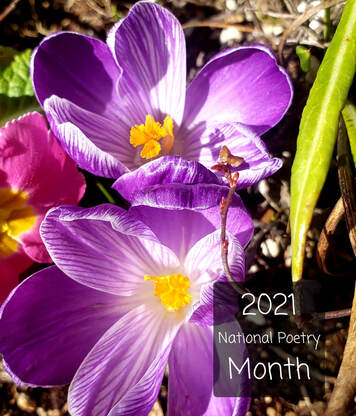 Welcome, welcome! Today all the poetry goodness of the world will be found at Catherine at Reading to the Core. It's my fifteenth year of participating (some years better than others). I have five great interviews lined up: April 2 POETRY FRIDAY: ALLAN WOLF April 9 POETRY FRIDAY: LISA FIPPS April 16 POETRY FRIDAY: CHRIS BARON April 23 POETRY FRIDAY: JOANNE ROSSMASSLER FRITZ April 30 POETRY FRIDAY: LITA JUDGE I love getting books into the hands of readers so there will be prizes for stopping by and saying hi. What inspired you to write EVERYWHERE BLUE?
JRF: EVERYWHERE BLUE was woven together from many different threads. In 2013 and 2014, I had been writing poetry and submitting to literary journals. After one journal accepted two of my prose poems, I started writing a poem about oboe lessons. I played the oboe in junior high and although it had been a long time, I could still remember the crushed-leaf taste of the reed! That was the beginning of what would become EVERYWHERE BLUE. I always knew it would start in November. I get the sense that the environment, family, and music have always been important to you. Can you tell me more about that? JRF: We were a close family and I grew up the youngest of three siblings, surrounded by books and music. My mother took us to the library every week, and my early memories include following her around the house with a library book tucked under my arm, saying, "Mommy, would you read to me?" My parents were always playing records on the hi-fi, mostly classical but also Broadway show tunes. So music filled our small house. As for the environment, I can remember the first Earth Day in 1970. I was in tenth grade and we had a special assembly. Inspired, I walked home from school that day, instead of taking the bus, and I picked up trash along the highway! Soon after, I wrote a letter to our township commissioners, asking them to start a recycling center. I'm sure I've worried about the environment ever since then. Maddie has an undiagnosed anxiety condition, was that a challenge to write? JRF:I've suffered from mild anxiety most of my life, so it wasn't that much of a challenge to give Maddie some of my own symptoms (the stomach issues, the nervousness, the heart palpitations). But the story needed more, so I did lots of research. I read a lot of books about OCD in kids, and kids who worry. Did you have characters that were easier or more difficult to write? JRF:The kids were easier for me to write than the parents! Both parents were flat characters in the beginning. Even though I'm a parent myself (of two grown sons), I had to work on bringing Maman and Daddy to life. This is why I much prefer revision, because I could see them becoming more real with each draft. Strum was also difficult to write about because we only get to know him through the memories of other characters. My wonderful editor, Sally Morgridge, had me add even more flashbacks. What kind of research did you do for the book? JRF: I've already mentioned the anxiety and OCD research, but i also did lots of research on the climate crisis, much of which didn't even make it into the book. For instance, I spent a long time researching frozen methane hydrates, and then as I revised the novel, that information didn't seem necessary. But all research is fascinating and educational, so I didn't mind. How did you come up with the color blue as an image? JRF:The color blue appeared early on in my rough draft, because I knew from the beginning I wanted a scene with the Butterfly Farm and Maddie and Strum chasing blue morphos inside the screened-in area. From there, it seemed natural to expand the mentions of blue. And blue can symbolize so much. It can be a bright happy color, or a symbol of depression. The poem "Anything With Blue In It", about learning some new music, Gershwin's Rhapsody in Blue, was one of the later additions to the book. I loved that each section of the book is a musical term. How did you come up with this idea, was it a revision thought? JRF:Thank you for saying that! I always knew that I wanted to start with a diminuendo. That first poem (revised many times) has been the first poem all along. Then, because I'm a pantser, the idea just naturally grew from there. I knew all along I wanted Maddie to be musical, and that there would be plenty of musical terms. It occurred to me one day that I needed four parts, because a symphony has four parts. I really liked that you addressed a common theme of parent’s expectations of their children. I think that will resonate with readers. Was that something you experienced? JRF:My parents never had unreasonable expectations for us. I think that's a consequence of being born a girl in the 1950s! Back then, it was understood that I would grow up and get married. Although I have the impression my parents told us we could be anything we wanted to be. There was no pressure. My mother was a stay-at-home Mom until I was in high school. Then she went back and finished her college degree and continued on to earn a Masters in Library Science.We were in college at the same time! Not the same college, though. She then became the Archivist at the Philadelphia Museum of Art. So in a way, she defied her own generation's expectations. Do you have a favorite scene or quote from the book? If you were to give a reading, what might you read to the audience? JRF:Not one favorite scene or quote, no. But I do have several favorite poems or even favorite stanzas within poems. One of my favorite scenes has always been the ending scene. I think if I gave a reading, though, I'd probably recite "I Am a Walking Fraction" or "Butterfly Dreams". I’ve been taking some classes at the Highlights Foundation with Cordelia Jensen. We've been discussing what is the definition of a verse novel? What are your thoughts on the definition? JRF:Oh, how nice for you! Isn't the Highlights Foundation wonderful? I wrote some of my best poems in Cabin 9 in 2016 and again in 2017! I know it's virtual this year because of the pandemic, but I'm sure it's still inspiring. And Cordelia Jensen would be a wonderful teacher. I suspect every verse novelist would come up with their own definition of a verse novel! It's not just poetry. I'd say it's a novel told in an interconnected series of poems. The story is almost more important than the poetry. But the poetry needs to be beautiful and inspiring too. Novels in verse tend to be more personal and emotional, and are always first person, nearly always present tense. Mine started out as nothing but free verse, as most verse novels do. It was my agent, Barbara Krasner (herself a writer) who insisted I add a villanelle at a moment of despair (the poem "Leaving", the most challenging poem I had to write!) and several rhyming couplets and tercets. I also have two haiku in my novel. What is your current writing project? JRF:My current WIP is nowhere near finished, so I don't want to say too much about it! But I am writing about brain aneurysms. I know, it's a strange topic for a novel in verse, but I've survived two ruptures and it's time I wrote about it! Thanks for allowing me to interview you, JRF:Thank you, Jone! I really appreciate you taking the time to interview me, and appreciate your thoughtful questions. And hold on, dear readers...Joanne has donated a copy as prize when the book is released in June. It will be for a US reader and will be signed, SQUEE!!! Thank you, Joanne! Wow! This week. Thank you pollens for being so high and causing itchy eyes, asthma, and tiredness. UGH! So today, four poems. Three a series on the Junco nest in my hanging flower pot. One for Earth Day. Earth Day has always been special to me. Everyday should be earth day. This is a photo I took last week when visiting a college friend.
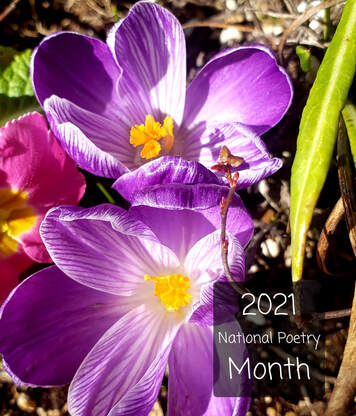 Welcome to 2021 National Poetry Month. It's my fifteenth year of participating (some years better than others). Today Poetry Friday is held at Jama at Jama's Alphabet Soup and she has quite the alphabet soup feast for us. I have five great interviews lined up: April 2 POETRY FRIDAY: ALLAN WOLF April 9 POETRY FRIDAY: LISA FIPPS April 16 POETRY FRIDAY: CHRIS BARON April 23 POETRY FRIDAY: JOANNE ROSSMASSLER FRITZ April 30 POETRY FRIDAY: LITA JUDGE I love getting books into the hands of readers so there will be prizes for stopping by and saying hi. Today, I am thrilled to be hosting Chris Baron as he answers questions about his second book, THE MAGICAL IMPERFECT. This book will be available June 2021. THE MAGICAL IMPERFECT was just what I needed to read now. I remembered that 1989 quake and where I was (In Vancouver, WA, watching the World Series). The story of Etan and Malia shows readers the power of friendship as well as the strength of compassion. And I love the bond between Eta and his father and Grandfather as well as Malia and her family. I wish that when I was a K5 Teacher Librarian, that I had had a copy of the book. I had one student who had extreme eczema and there were days I could see her discomfort and pain. It would have been so cool to have a book that she could see herself in. WELCOME CHRIS BARONMy questions:
When did you know that this is the story you would write for your next book? (were you still working on ALL OF ME?) What was the spark that started you writing it? Baron: Love this question: I think the quiet voices were stirring for a long time. Having lived in the Bay Area, the magic of that place is present in almost all of my stories. It was really when I started thinking about my grandfather who was a jeweler in Brooklyn that the story started taking shape. I had some great conversations with my agent about my ideas for this story--about two unlikely friends--kids-helping one another, and it grew from there. Did anyone in your family arrive in the states via Angel Island? This place as an entry spot is new to me. I had no idea. Baron: It’s fascinating to see the history. I am familiar with the history, and my family actually arrived through Ellis Island while my wife’s family emigrated from the Philippines in the 1960s, so there is a lot of family history connected with ports of entry and the movement from an entirely different culture into a “new world.” Angel Island history is lesser known than Ellis Island. There were many immigrants who came through, Japanese, Filipino, remnants of Jews fleeing Europe. It’s a place of deep pain for so many, and there is much to be written about here--primarily the roughly 175,000 Chinese Immigrants that came through and the countless numbers who were interrogated or detained. A fantastic resource to learn more about Angel Island and all that happened there is from this book which was a core source of my research: Angel Island: Immigrant Gateway to America, by Erika Lee and Judy Yung. Also--two other books I highly recommend are: Paper Son: The Inspiring Story of Tyrus Wong, Immigrant and Artist, and Paper Son: Lee's Journey to America by Helen Foster James and Virginia Shin-Mui Loh. As a child did you experience selective mutism or bullying? What kind of research did you do for the book? Baron: So MUCH RESEARCH! I spent time in our College Library, working with our Mental Health Department to learn all I could. I also highly recommend After Zero, by Christina Collins, for a really powerful story about selective Mutism. Most of all, I relied on my own experience in dealing with this. As a kid, we moved a lot. One of the ways I dealt with the anxiety of moving was the manifestation of mild selective mutism. It was easier to stay inside my imagination than give my words away. It never lasted long, and certainly others deal with much more severe cases than this, but I think I have a strong taste of it. As for bullying: Not talking often invited some sort of cruelty--but the real bullying for me was almost always about my weight (see ALL OF ME). Were you living in the San Francisco area in 1989? Baron: I lived in the Bay Area before 1989, but I still had family and friends living there during that tumultuous time. What led you to the decision to create the fictional town of Ship’s Haven ( I do love the name)? Wouldn’t it have been just as easy to use a real town? Baron: I love this question. I always draw maps-maps are such a huge part of my writing process. There were a few towns I considered as candidates, but I always envisioned a small town on the coast bordered by redwoods. The deeper I went into the magic of this town, it’s diverse inhabitants, and the roots of the story--Ship’s haven came alive. Were there any characters that were more of a challenge to write? Baron: Yes and no. But isn’t this true for all writers? (smile). I think I always want to create the most authentic characters I can--so each character took a lot of time and “extra” writing to ensure they came alive in the best way possible. I think the greatest challenge was to make sure that the rich culture and history of the characters were fully and appropriately represented, so I spent a lot of time, for example, working with my wife on Malia’s character. I also had several sensitivity readers for different aspects of the story. This really helped me through different characterizations of everyone. I loved the bareket scenes. It hit home to have lost and regain a family treasure. What is the story behind the bareket. The return and the tiny rabbit footprints around it gives it a sense of magical realism. Baron: I am SO glad to hear this. The bareket scenes were close to my heart. I wanted a jewel that had a sacred and symbolic life, a symbol of deep hope. My grandfather worked in a jewelry shop in Brooklyn--nothing fancy--trophies, watch repair, stuff like that. But whenever I went to see him he always had a treasure for me--something solid I could hold in my hand. I wanted Etan to have this, too. There are so many magical moments in this story: the talking to the trees, the clay, the treasure box. Again, what are the backstories for them? (I’m a tree talker so I get it). Baron: Without too many spoilers--I would say that this story is rooted in the idea that magic is all around us--that if we might only stop and listen-pay attention-we will see and hear the trees, or discover the ancient things living right beside us. But also--I love trees. Malia’s cape does a lot of work in the story. I loved the ending image of the cape (I don’t want to give it away). Where did this image come from? Baron: It does! So much of the book deals with Malia’s severe skin condition. These images relate to the life I have lived with my wife and her severe eczema--learning to hide and to be brave at different times. It’s a deep well in our lives, and the cape comes from there. I wanted to know more about the mother, I almost wondered at the end of the book if there is another book there about her and Etan. I loved that they both are notebooks. Baron: Ohhhhhhh, yes. I like this idea. She and Etan have a very special connection, and this is part of why it hits him so hard when she has to leave. The notebook is an extension of herself that she gifts to him. I think as a parent-writing Etan’s mother and father felt like two sides of a coin. Parents often express themselves differently even when they both love their child with all of who they are. It felt close writing both--even as they were so different. Do you keep a notebook? What is your writing routine? Baron: I have a giant notebook that I draw in, write ideas, and of course, maps. I confess though that my kids often take it and draw surprise pictures inside (which I love). Do you have a favorite scene or quote from the book? If you were to give a reading, what might you read to the audience? Baron: I think there is a scene where Etan first meets Malia that I have read to a few classes at school visits. In these scenes, Malia stays hidden behind her door, but at the very end of their time together, Malia’s irrepressible vitality comes through like a light shining under the door and into Etan’s heart. Goodbye, Etan the artist. Please bring me a pumpkin if you can. And for a moment I see half of her face smiling, as she closes the door. Finally, I’ve been taking some classes at the Highlights Foundation with Cordelia Jensen. We’ve been discussing what is the definition of a verse novel. What are your thoughts on the definition? Baron: Cordelia is amazing. I am not sure what more I can add to the definition, but I can say that for me Novels in verse relate to all kinds of readers. There are all the elements of fiction at work, plot, character, setting, theme, conflict, all at work. but it’s delivered in the most careful way possible. There is space on the page, measured breaks, pacing, music,figurative language, and movement of lines that a reader of almost any level can find their way into. The structure of verse creates an intimacy with a reader that allows them to hear the tone and cadence of a character’s voice. This can create even stronger connections for readers. Thank you for taking the time to answer my questions, Chris. I hope that many will be sure to put this on their lists of "Books-to-Buy-in-June" list. That's when it will be available.  Welcome to 2021 National Poetry Month. It's my fifteenth year of participating (some years better than others). This year I'm taking a look at some previous poems that I enjoyed and will be revising. Some have been on the blog before and others not. I have five great interviews lined up: April 2 POETRY FRIDAY: ALLAN WOLF April 9 POETRY FRIDAY: LISA FIPPS April 16 POETRY FRIDAY: CHRIS BARON April 23 POETRY FRIDAY: JOANNE ROSSMASSLER FRITZ April 30 POETRY FRIDAY: LITA JUDGE I love getting books into the hands of readers so there will be prizes for stopping by and saying hi. So my April Poetry Project is to revisit and redux some previous poems. I am not totally feeling it! So I am changing it up. I am going to revise and redux some poems and sprinkle in new poems with it. Today's is a response to the "Verse of Ages" prompt on April 15: 'essence'. It gives me an opportunity to play with my Scottish Gaelic. Outside my writing room hangs a flower basket. The juncos have moved in. As I thought about the word essence, I thought of the care of their young. bidh eòin a ’biathadh cnuimhean dha na leanaban aca brìgh gaoil © jone rush macculloch, draft Translation birds feed worms to their babies essence of love © jone rush macculloch, draft |
AuthorAll photos and poems in these blog posts are copyrighted to Jone Rush MacCulloch 2006- Present. Please do not copy, reprint or reproduce without written permission from me. Categories
All
Archives
July 2024
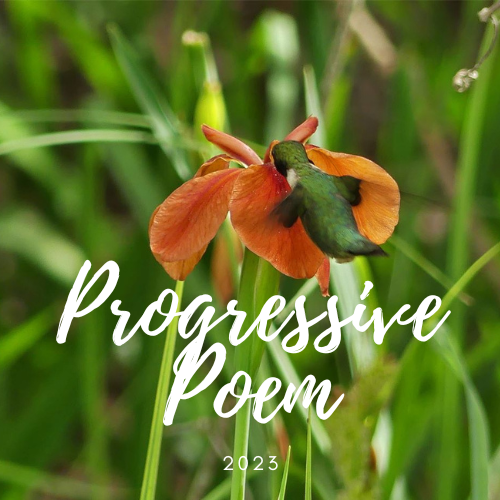
2023 Progressive Poem
April 1 Mary Lee Hahn, Another Year of Reading April 2 Heidi Mordhorst, My Juicy Little Universe April 3 Tabatha, The Opposite of Indifference April 4 Buffy Silverman April 5 Rose Cappelli, Imagine the Possibilities April 6 Donna Smith, Mainely Write April 7 Margaret Simon, Reflections on the Teche April 8 Leigh Anne, A Day in the Life April 9 Linda Mitchell, A Word Edgewise April 10 Denise Krebs, Dare to Care April 11 Emma Roller, Penguins and Poems April 12 Dave Roller, Leap Of Dave April 13 Irene Latham Live You Poem April 14 Janice Scully, Salt City Verse April 15 Jone Rush MacCulloch April 16 Linda Baie, TeacherDance April 17 Carol Varsalona, Beyond Literacy Link April 18 Marcie Atkins April 19 Carol Labuzzetta at The Apples in My Orchard April 20 Cathy Hutter, Poeturescapes April 21 Sarah Grace Tuttle, Sarah Grace Tuttle’s Blog, April 22 Marilyn Garcia April 23 Catherine, Reading to the Core April 24 Janet Fagal, hosted by Tabatha, The Opposite of Indifference April 25 Ruth, There is no Such Thing as a God-Forsaken Town April 26 Patricia J. Franz, Reverie April 27 Theresa Gaughan, Theresa’s Teaching Tidbits April 28 Karin Fisher-Golton, Still in Awe Blog April 29 Karen Eastlund, Karen’s Got a Blog April 30 Michelle Kogan Illustration, Painting, and Writing |


